How Extra Butter Found A New Home With MoMA PS1
The true homecoming for one of NY’s beloved sneaker hubs.
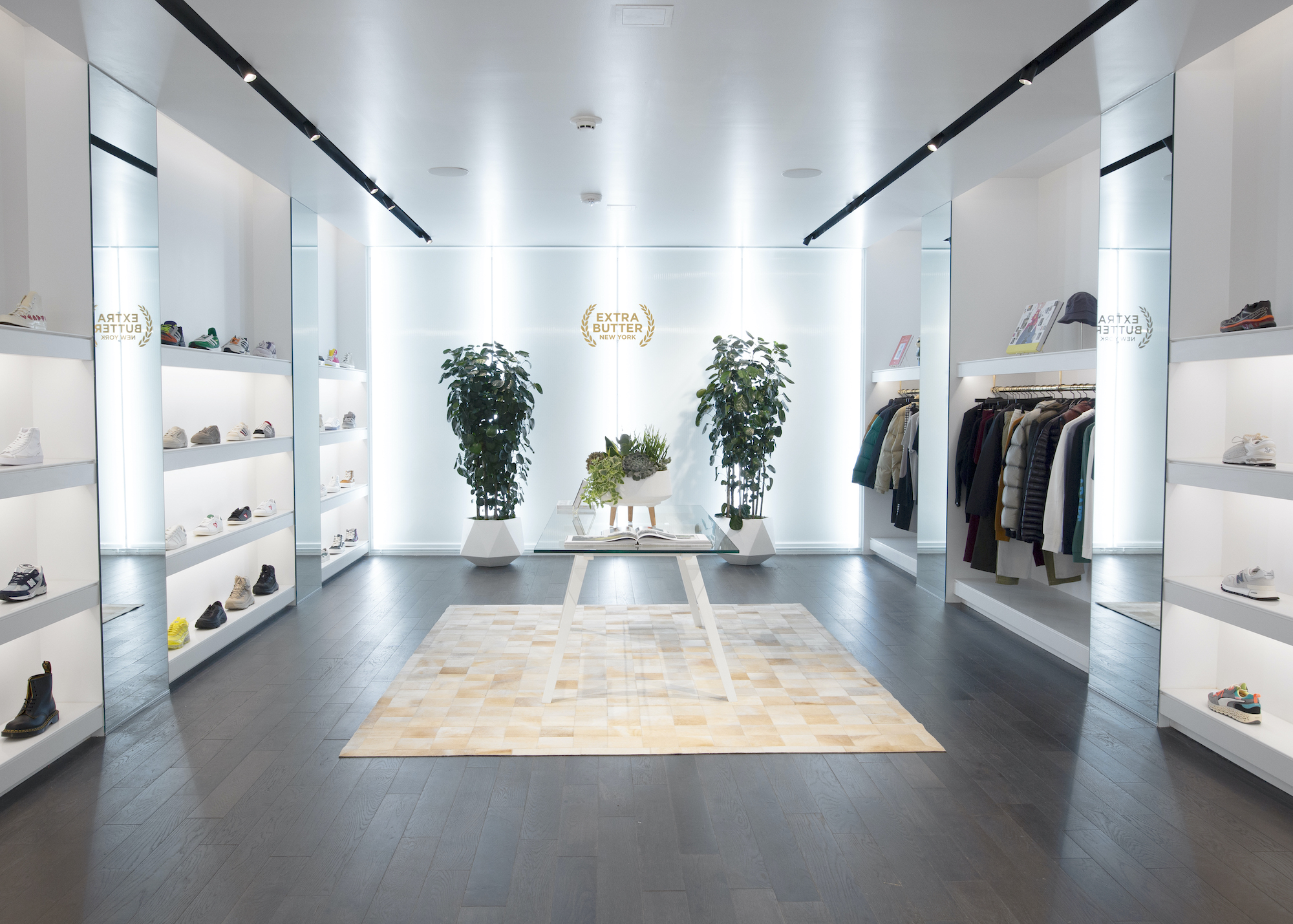
In the world of Extra Butter, the NY retail store that houses some of the best in sneaker and street fashion, customer experience and storytelling are key. For their new location in Long Island City in the iconic MoMA PS1 building, the brand’s effervescent twist on shopping has been elevated to new levels—just one walk through the illuminated 3,000 square foot boutique is enough for you to drool over the selection of must-have pieces. Carrying over their staple movie theater theme along with 12 vintage seats facing a cinema-quality projector, the EB team has truly outdone themselves with the addition of a hidden 1930’s speakeasy-inspired bar, which offers one-of-a-kind specialty drinks—serving as a luxurious, yet intimate, break from the city life. If there is one extra service that Extra Butter can offer to their devoted followers, it would be escapism—which serves as the overarching theme of Extra Butter, a place where one can divulge in the latest in street fashion while surrounding themselves in cinema classics.
In a conversation with V’s Kevin Ponce, Creative Director of Extra Butter, Bernie Gross dishes on the humble beginnings of the beloved sneaker haven and speaks on the ever-evolving landscape of streetwear culture.
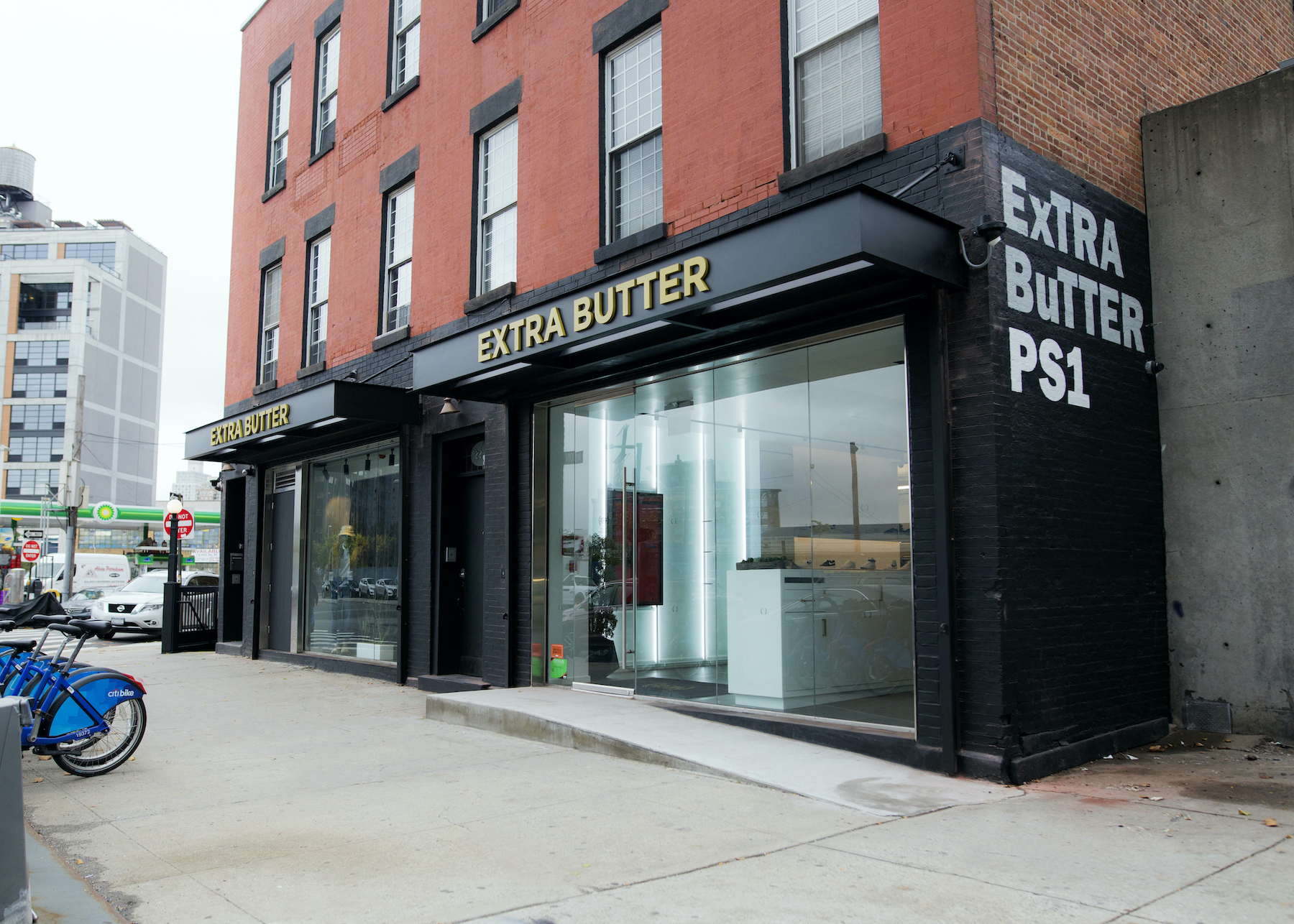
Kevin Ponce: Let’s talk about the origin story of Extra Butter—how did it all begin?
Bernie Gross: It’ll be 15 years, next year since we’ve opened up in 2007. The idea [was all about] elevating the customer service and retail experience and finds ways to augment the product, so it made sense that we went to the cinema route. Other than our love for sneakers and fashion, we had a bond [through] film. From a creative point of view, I’ve always found that the subjectivity about sneakers is the same as movies. It’s about how you found a way to visually connect with that moment or story, and [in doing so] we’ve always found [ways] to tell genuine stories and find commonalities with our customers. We’ve just understood that there was this stigma about New York streetwear, about how stodgy and elitist it was—and I feel like every person I talked to can always [rememeber] the first time they walked into a store and really felt judged and uncomfortable and I wanted to squash that. Coming from that b-boy background, it was all about taking the next kid on and [educating] them. The landscape has changed but that only challenges us to adapt and I think it’s what has been keeping the brand fresh.
KP: How are Queens and Extra Butter connected, beyond just this new store?
BG: As a team, we have a lot of deep history here—my partners Nick and Ankur immigrated here from India to Elmhurst. Their uncle actually started in footwear, in Rego park, in 1980—it’s funny because when I moved back to Queens, I actually moved right around the block from where his location was. [For me], my mom came [to this country] from Guatemala and she came to Queens Village so it was a no-brainer for me to come back. It was just really important for us to do Queens justice—this is truly a homecoming for the whole team at Extra Butter.

KP: How did the idea of opening a new Extra Butter store in MoMA PS1 come about?
BG: When we decided on Queens [as our next location], there was obviously a couple of key neighborhoods to consider first. If you want to go the straight retail route, Flushing has high traffic. If you want an existing cache, you would consider Astoria. But for us, [we thought] where can we find an existing hub of culture, so PS1 made the most sense. We were considering any location in Long Island City as close to MoMA as possible and we weren’t expecting that the location would be in the building. When we found out it was available, we immediately signed the lease and that’s kind of the other reason why this started 18 months ago—we weren’t prepared but we had to lock in the location. We worked backward—we got the space, we did the design and then we had actual access to it.
KP: Has there been any challenges with opening this new store, considering what has been happening globally?
BG: I wouldn’t wish opening a store [during] a global pandemic on my worst enemy. This is probably the most emotionally draining experience [to date] because it came with an 18-month delay. We’re now in the iconic MoMA PS1 building and [being that] it’s over 130 years old, we ended up having to go through many floorplans just to make sense of the space. Once COVID hit, we ended up having delays [overseas] and domestically, as well. I think if [this store] wasn’t in Queens, I don’t think we would have cared to get over those roadblocks.
I think the challenge of coming into a neighborhood that doesn’t have retail is that it’s going to be an uphill battle for the next couple of years, especially during COVID, but I think the advantage is since there’s no retail landscape, we have the ability to set the tone and create a voice. I think I have assurance now that we can help make sure that Long Island City won’t become corporate. The fact that we have our Long Island and Lower East Side roots, this has the ability to [be in] the same kind of vein. The great thing is that we have an audience that already has elevated sensibilities and tastes, so we’ll keep to the same vernacular and aesthetic of EB but I think the customer base has already met us. We’ve taken 10, 15 years to elevate ourselves and LIC has been waiting for us to get there.
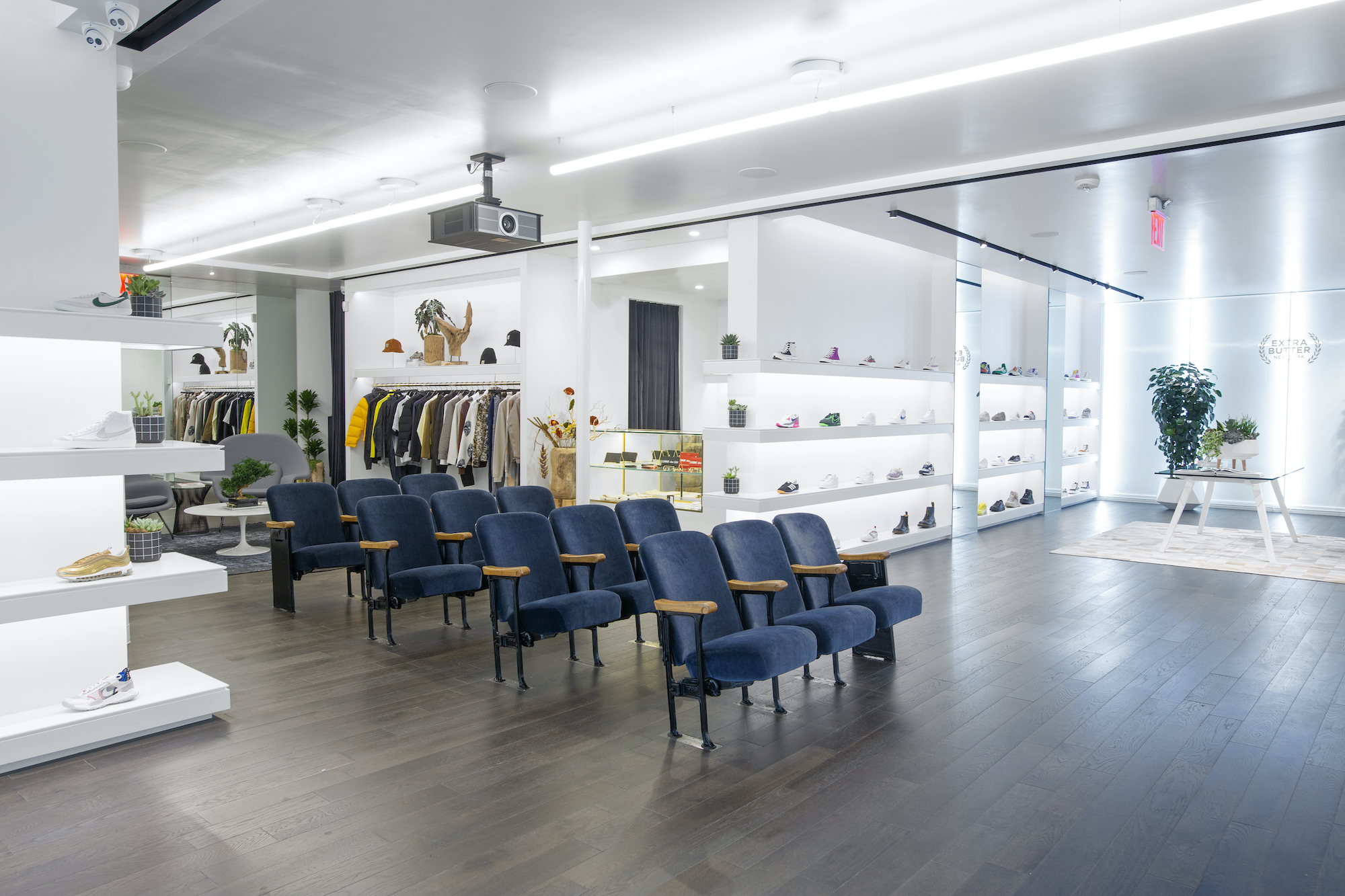
KP: Absolutely! I loved seeing the line wrap around the block of eager kids waiting to experience this new chapter.
BG: They’ve been hungry for it and I think the story that we had to tell with Stash, who’s a friend of the brand and how he’s tied into 5Pointz that used to be here, which was the graffiti mecca, people appreciate and they can connect the dots of like how EB kind of navigates through personal experience.
KP: With the devoted audience that EB has grown, what change or evolution have you witnessed over the years, in regards to sneakerheads and the culture around them?
BG: They’ve changed so much that I wouldn’t even necessarily call them sneakerheads. I think if you look at what defines a sneakerhead, it’s someone who’s in the know of something and who’s gonna do what they can to acquire and flaunt it—that’s anyone with access to the internet now. The fact that my dad can identify a Yeezy sneaker is a way of culture [doing] something that has an effect on a wider audience. So, he may not be into it but he acknowledges it. Because we have digital platforms connecting us, the culture has become way bigger. I used to look at it as a subculture, and it’s not—sneakers, streetwear, and luxury-inspired streetwear have become a phenomenon. I don’t think that we would be here if we didn’t have those pivots in technology and engaged. It’s the principle that opportunities are endless now and it’s not necessarily about sneakers or fashion—it’s opened up to collaborative experiences and lifestyles. I think people are just driven to collect experiences. They’re not there to collect the sneakers [anymore], but [the] larger audience wants to align with brands that they feel are directly aligned with their own personal ideology. If it’s not genuine to them, it doesn’t matter what the resale value is. They won’t even bother to pay attention to that product.
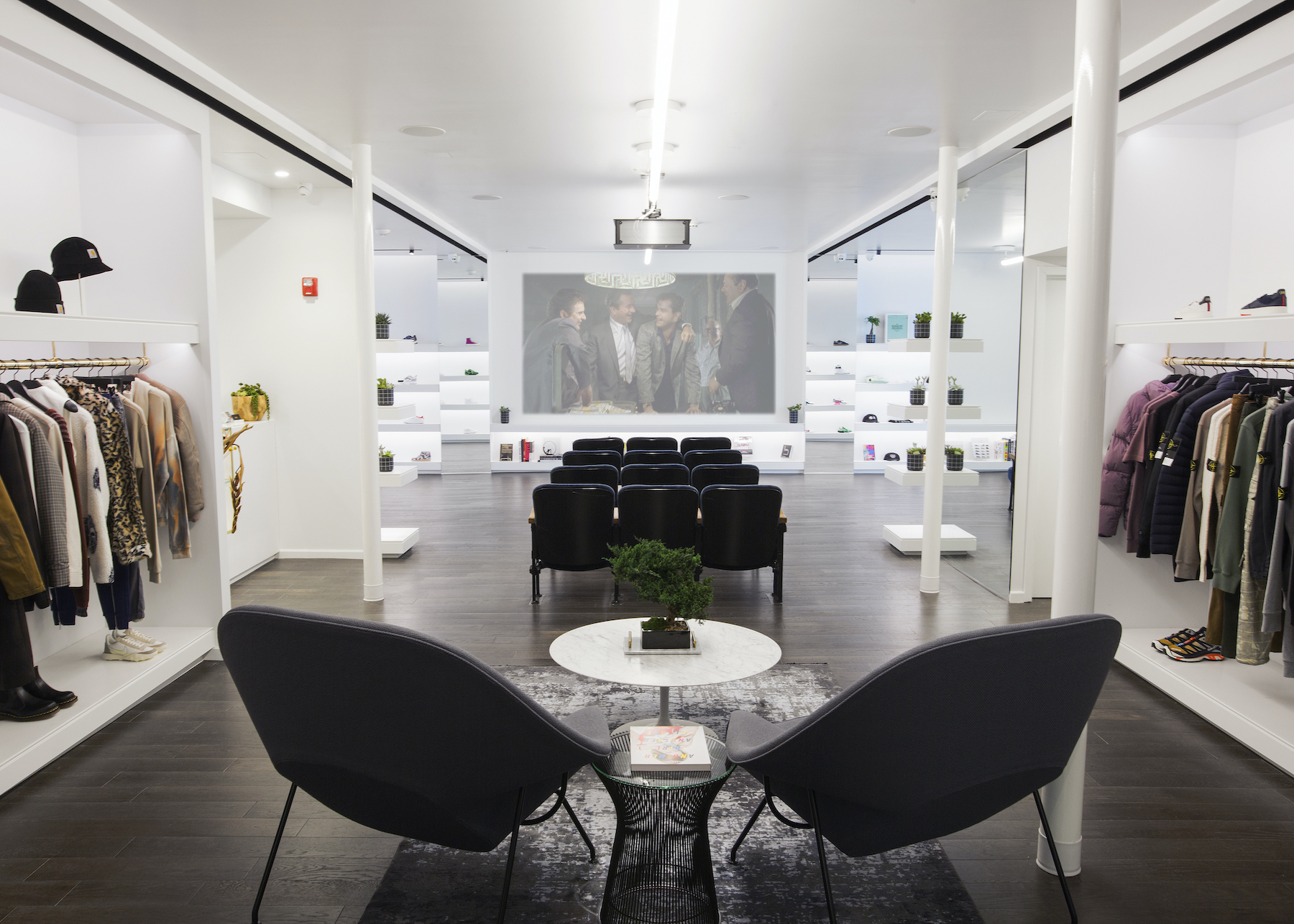
KP: Throughout the over decade long timeline of EB, there have been many collaborations that have made lasting impressions in the realm of sneakers—is there a personal favorite collab that was done?
BG: I think our Reebok Islanders collaboration was really special because that is our hometown team. As a crew, we would always go to Islander’s games and so when we had the opportunity to work with Reebok, [we wanted] to create a shoe that was meant for the fans. Licensed sports merch isn’t that great, so when you’re a hardcore fan and you happen to be fashionable, it’s not that fun to go to a game and wear something really basic, so we wanted to really step up the footwear game for them. Also, the first Asics collection, Death List 5, is inspired by Kill Bill and we came up with the concept of that years before we opened up Extra Butter. We just knew that if we ever had a chance to work with Asics, we knew Kill Bill was it—Asics had DNA in the movie, so we wanted to tell that story from our own lens. We opened up our LES location with it and that was the first time my parents kind of understood what this meant. For the first five years of EB, I was actually doing this on the side as a hobby. I wasn’t even getting paid to do the designs—I was working at an agency doing creative. They came to the opening of LES, in which there were 300 people lined up and they pulled me aside in the corner and they were like “we’re super proud of you”—I started fucking balling. Ever since then, they support it—my dad rocks EB head to toe on the weekends. Always.
KP: Are you still hopeful that the spirit of collaborating still alive, especially with what’s happening in the world?
BG: Absolutely! I think now that people have an understanding of our ability to story-tell to a specific capacity, you’re going to start to see a lot of collaborations in the next year. That’s the beauty of having a film inspired brand—there will always be new films and new talent that will inspire us to tell more stories.
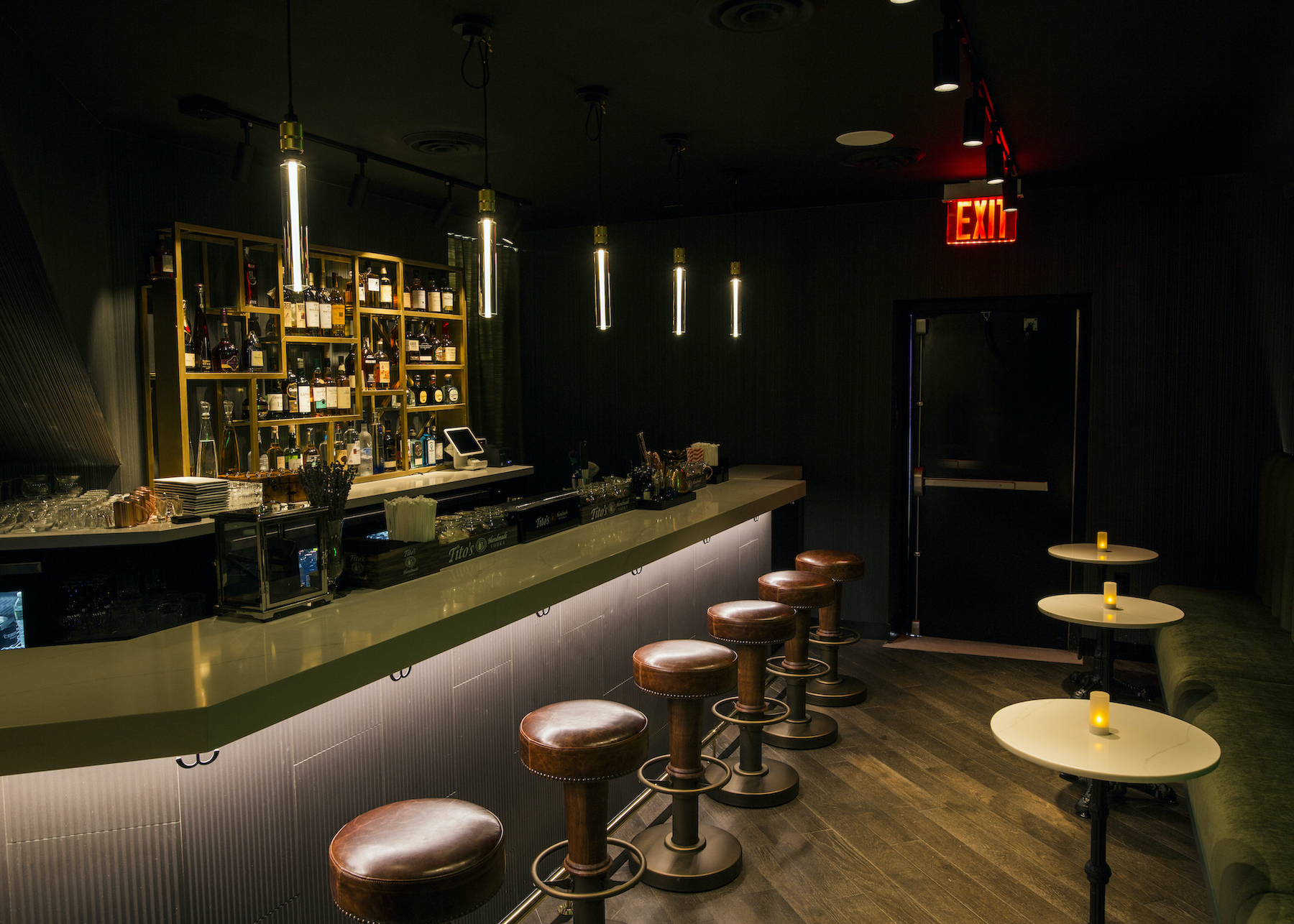
Discover the new store at 22-03 Jackson Ave in Long Island City, NY 11101
Discover More
